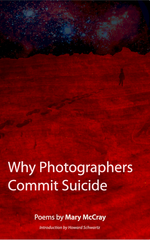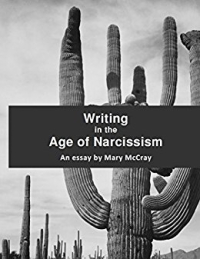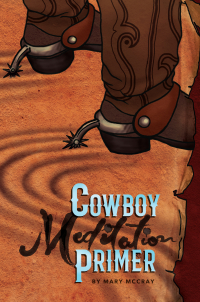I’m finishing up two other poetry books today, serendipitously both combined works of poems and essays, albeit each organized differently. One is La Llorona on the Longfellow Bridge, Poetry y ostras movidas by Alicia Gaspar de Alba and the other is Marilyn: Essays & Poems by Heidi Seaborn. For the most part, I have liked the essays better in de Alba’s book and like best the Seaborn poems that delve into Marilyn Monroe’s biography, although Seabourn’s investigations into her own personal insomnia are interesting, there’s just a lot of that to read through.
 But last week I found out my friend, the poet Ann Cefola, has a new book of translations available with the French poet Hélène Sanguinetti, Alparegho, Like-nothing-else, so that book has been moved to the top of my to-read stack.
But last week I found out my friend, the poet Ann Cefola, has a new book of translations available with the French poet Hélène Sanguinetti, Alparegho, Like-nothing-else, so that book has been moved to the top of my to-read stack.
To launch the book Beautiful Days Press hosted a transnational, bilingual poetry reading between Cefola (in Long Island, New York) and Sanguinetti (in Arlene, France) held on Zoom with attendees from all over the world.
The publisher began by quoting from prior reviews calling Cefola’s prior translations of Sanguinetti “splendidly nuanced” and created “with scrupulous fidelity.”
Which sounds like well-made translations to me and I’m fascinated with this whole process of translation, especially as it was described in this Zoom reading.
Cefola talked about how Sanguinetti’s words have “muscle” and that “they struggle on the page.”
Sanguinetti and Cefola then each read the same section, first Sanguinetti in French and then Cefola in English, Sanguinetti beginning with some dramatically performative silence followed by a very impassioned reading.
I was able to attend the first Cefola/Sanguinetti reading years ago in Los Angeles for their first book-length effort (Hence This Cradle). Back then we gathered at the Otis College of Art and Design and it was 2007, which seems like many lifetimes ago in the world of Hélène Sanguinetti.
Based on the comments of the attendees on the Zoom call, I will be expecting a collection of experimental quest poems. One reviewer called it a mock-epic. Sanguinetti talks about the quest being the “adventure of our lives.”
After they both read from the book, one attendee said the poem was “lovely to the ear in English and French.”
When asked about how Cefola works with Sanguinetti as a translator, Cefola said “the tracks are there” and that she understood how different English was with its often harsh, Anglo-Saxon sounds. Her job was to mediate between the English and the French but in doing so she had to get “rid of a lot of prepositions that make French so lyrical and beautiful.”
Cefola said her first pass was to capture “accurate words” and then a second pass was made to choose words that “fit the sound,” words that would “resonate” with Sanguinetti’s French.
Cefola admitted she wanted to make Sanguinetti sound more lyrical in the beginning but Sanguinetti told her “this is not what I’m doing,” that Sanguinetti wanted “a struggle on the page” and so Cefola had to “let her work be difficult” and in doing so she had to “set aside [her] own traditions.”
Which is a larger exercise (and lesson) in human understanding and empathy.
Another attendee asked about the idea of a bridge being used as a symbol in the book and Sanguinetti talked about how it could illustrate courage and the unknown.
Sanguinetti says “Alparegho” is an invented word that is both “similar to myself” and “similar to nothing” and she talked about paradox, which feels like much of her work to me.
She noted with mild frustration that people have told her they understand her poems better when she reads them aloud. And the performance of her poems is definitely worth watching but the look of her words on a page is equally interesting.
She then showed us an abstractly human-formed sculpture. She said she makes objects with clay and plaster and this was a character she made covered in yellow acrylic paint with a bird’s head and horns. She said she gave it a red stain for a heart and added a pebble and a button. When it was done she asked it, “who are you?” And this figure became was a starting-point for her character Aplaragho, “a point of departure, half sun, half moon.”
She talked about Aplaragho rhyming with the word escargot (and how the book contains a snail’s journey) and the hermaphrodite nature of the character.
As an aside, this point of departure reminded me of Georgia O’Keeffe and how her paintings were often influenced by music. The O’Keeffe gift shops in Santa Fe and Abiquiu even sell a CD compilation of some of her favorite pieces, Georgia O’Keeffe, A Musical Perspective, which includes work from Bach, Beethoven, Schumann, Stravinsky, Copland, Schubert, Mendelssohn, Gershwin and Vivaldi. There’s also a Joel Goodman piece on the CD called “O’Keeffe’s Colors.” I was disappointed the CD booklet did not (or could not) trace specific music works back to certain O’Keeffe paintings. But the bridges that form between music, words and art is yet another kind of translation that is fascinating, and O’Keeffe shared it with other painters, sculptors and photographers. She also developed close friendships with writers.
In a second question to Cefola, she explained more about her translation process, that she doesn’t read the poem in full in French at the begining, that she translates it as she goes, a very “basic translation” and that the poem then “develops like a photograph” in a darkroom.
“I see it as I translate,” she said. In the second pass, Cefola will “fine-tune” the meaning and the language “to convey the spirit to an English-speaking audience. She said “accuracy” was more important than any kind of “meaning” and it’s interesting to think about the fine-lined difference between those two concepts.
Sanguinetti then expressed her admiration for Cefola’s translations, called them “incredible” and said she felt they read better in English than in French to which Cefola interrupted with an emphatic “no, no, no.” Sanguinetti said there was sometimes a word or two that was translated in a way that gave an unintentional meaning but that through the translation process she often discovered aspects of the work she hadn’t seen before.
How great is that? Looking forward to reading this book.
More reviews, a synopsis and to purchase: https://asterismbooks.com/product/alparegho-like-nothing-else
To see a recording of the book launch: https://www.youtube.com/watch?v=i8HPP10pdLk



Leave a Reply